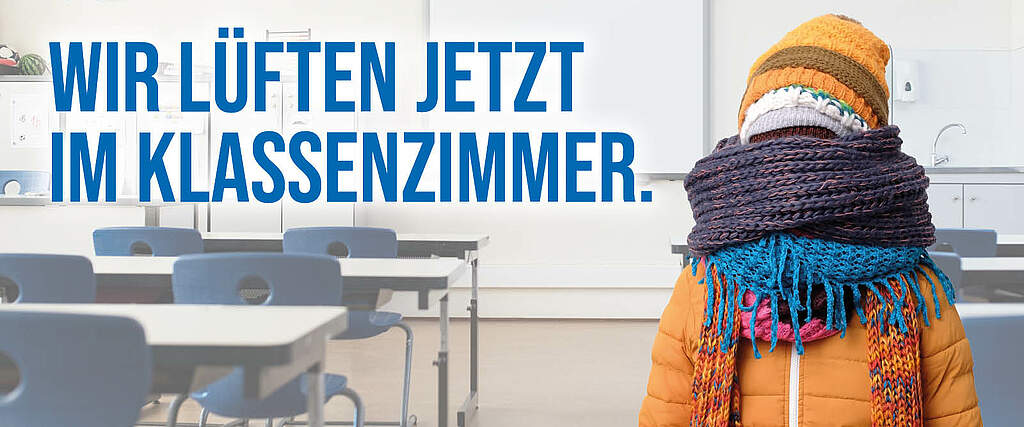Healthy indoor air with heat recovery
Are you still freezing or are you already ventilating with inVENTer?
The aerosol concentration in the room air is an important factor for the spread of viruses and is therefore one of the main causes of an increased risk of infection. The federal government has meanwhile added room ventilation to the well-known AHA rule. In addition to maintaining the minimum distance and wearing a mouth and nose cover, it is therefore necessary to increase the supply of fresh air in the interior. In this way, the quality of the room air can be improved and aerosols can be effectively broken down.
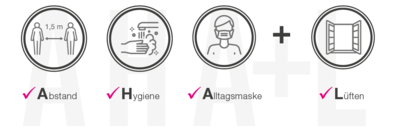
Fresh air reduces the concentration of aerosols in the room air
Cross ventilation with wide-open windows opposite is the most effective measure to reduce the concentration of virus contamination in the room air. However, this method has noticeable disadvantages, especially in the winter months: interiors cool down. Permanent reheating is both expensive and bad for the environment. The cold draft in the room also lowers the immune system – we also become more susceptible to supposedly more harmless pathogens. The use of decentralized ventilation can not only improve the quality of the room air, but also maintain the room warmth during ventilation by up to 88%.
Improve indoor air with decentralised ventilation in nurseries, schools and offices:
These are your advantages of decentralized room ventilation from inVENTer:
- Ventilation support up to 90 m³/h
- Easy retrofitting in the outer walls
- Minimize cold drafts by ventilating the windows
- No regular cooling of the rooms
- Up to 88% heat recovery
- Quiet operation optionally with soundproof lining
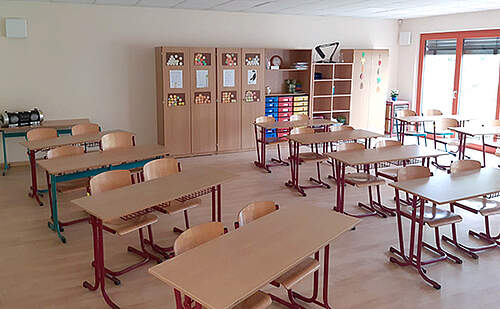
We are now airing ...
... in the office
Despite social distancing and compliance with hygiene regulations, the risk of infection with infectious diseases is high when several people share an office. Whether in meetings or on the phone, when things get louder in the office, more aerosols are emitted. These quickly spread throughout the office if regular ventilation is not ensured. However, frequent window opening also cools the office down more quickly, especially when it is freezing cold outside. Controlled ventilation in the office can help here. Decentralized room ventilation helps to establish basic ventilation in the office - virus and CO2 concentrations in the room air are constantly reduced, and the intervals between bursts of ventilation are minimized. This combination not only meets the requirements of the workplace directive, it also ensures a pleasant working environment - in both senses of the word.
More about ventilation in the office... in kindergarten
Keeping your distance and following hygiene rules at daycare? With a group of 3 to 6-year-old children in a mostly confined space, it is often difficult to implement. However, regular ventilation in the nursery should be part of the standard program. In the winter months, however, it can get really cold in the nursery. The cold also lowers young children's immune defenses, which means that pathogens spread more quickly in the body. Controlled ventilation in the nursery can be a solution to this. Decentralized ventilation with heat recovery as ventilation support continuously brings preheated fresh air inside and thus reduces the viral load in the room air.
More about ventilation in the kindergarten... at school
Classrooms are sometimes the largest centres of infection, as up to 30 pupils and teachers are present in a confined space. It is not only viruses that spread very quickly in stale air. It has long been known that the CO2 concentration in classrooms is often far too high. Decentralised ventilation in schools ensures continuous air exchange. In conjunction with shock ventilation during CO2/aerosol peaks, they can effectively ventilate classrooms without cooling the indoor air too much. This can greatly improve the quality of the air in primary and secondary schools during lessons.
More about ventilation in schools... in the waiting room
When waiting becomes a risk: The risk of infection from the air in waiting rooms is also very high if several people are in the same room for a longer period of time. A wide variety of pathogens can accumulate and spread in the air, especially in doctors' surgeries. Continuous ventilation in the doctor's surgery, but also in other waiting rooms, is essential to prevent infection through aerosols in the room air. Retrofitting a decentralised ventilation system in the waiting room offers the advantage of automatic basic ventilation of the waiting room without the room cooling down too quickly. Additional airing intervals during periods of high room utilisation are reduced to a minimum.
More about ventilation in the waiting roomHealthy indoor air with a comfortable temperature

Decentralized ventilation for your office!
In rooms where several people are present, the CO2 concentration increases rapidly. The iV-Office ensures fresh, oxygen-rich and healthy air through a continuous change of air. The regular exchange of air also ensures that the virus concentration in the interior is reduced.
The inVENTer ventilation systems can easily be retrofitted using a core hole.
Healthy air doesn’t have to be cool. In the heart of our fans there is a ceramic core that first stores the heat from the indoor air and then releases it to the incoming outside air in a second step.
The 4in1 office set
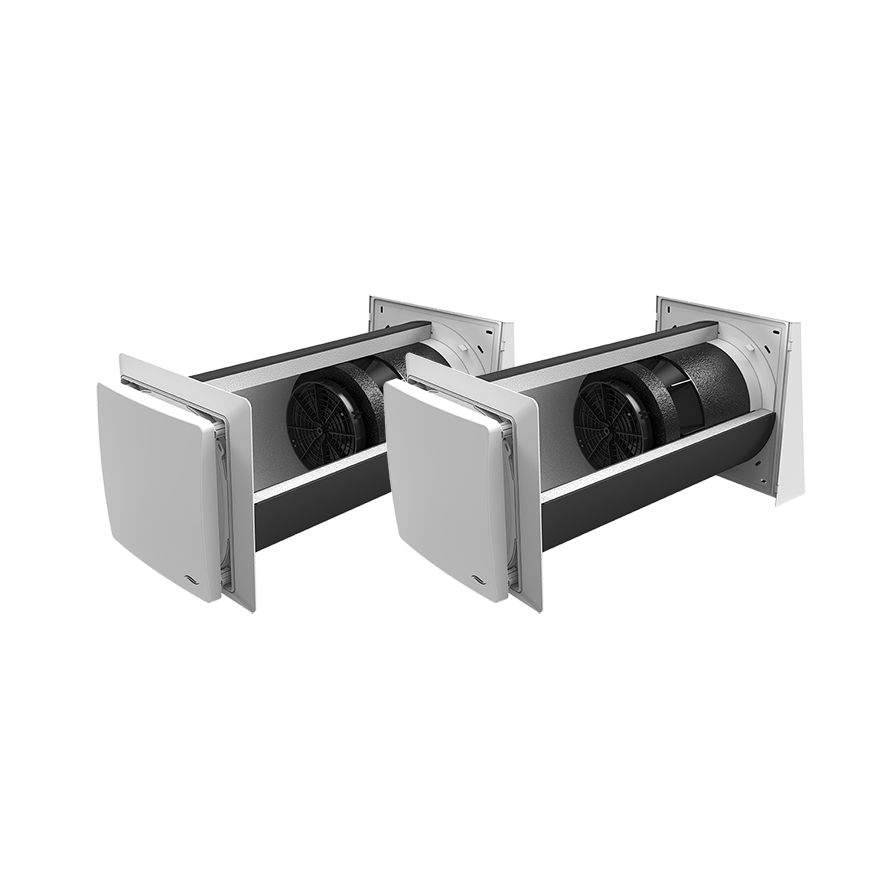
iV-Office – twice as strong together
Healthy indoor air thanks to the Xenion EFP fan with maximum performance and minimum noise. The increased speed ensures a constant, healthy air exchange.
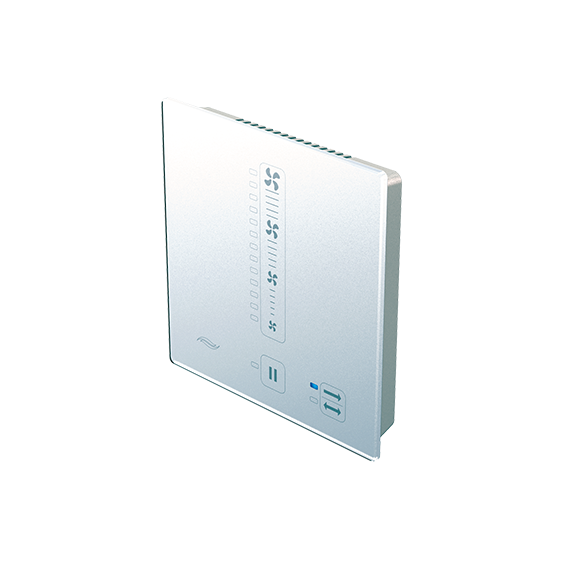
sMove s8 controller – Touch & Slide
The sMove s8 controller controls up to 4 connected systems, including pause function. The ventilation intensity is set intuitively with Touch & Slide.
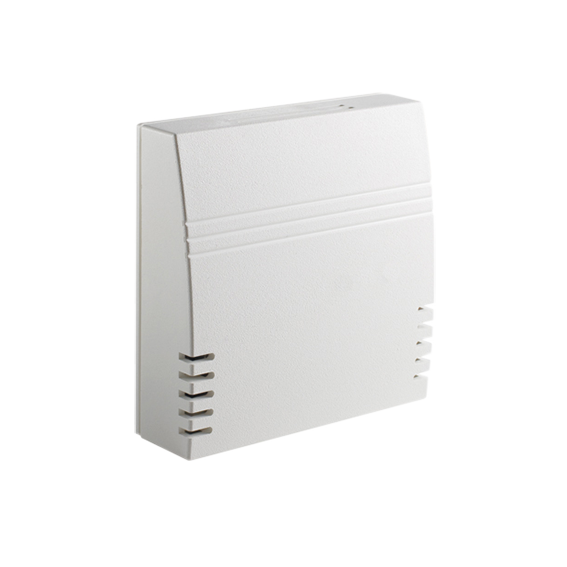
CO2 sensor CS1
The CO2 sensor monitors the concentration ofCO2 in the room air.
Demand-controlled ventilation ensures healthy air quality in the office.
Rely on controlled room ventilation
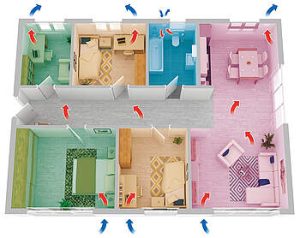
“A ventilation system permanently and continuously ensures that the air in the room is evenly renewed, thereby significantly reducing the risk of infection.”
Aerosol control
Whether you are concentrating on your work or having lively conversations – you breathe a lot in public spaces. Aerosols collect in the air to which pathogens can attach. Regular air exchange through controlled room ventilation is of great importance, ideally supported by an automatic ventilation system from inVENTer.
Quick Installation
Too complicated? Not at all! inVENTer ventilation systems are inserted into the outer wall by means of a core drill and are intuitively controlled with connected controllers. This enables a regular exchange of air. It couldn’t be easier!
Heat recovery
Fresh air doesn’t have to be cool. Because in the heart of our fans there is a ceramic core that first stores the heat from the indoor air and then releases it to the incoming outside air in a second step. For a comfortable room climate thanks to the room ventilation with heat recovery.
Healthy indoor air in large roomsthrough decentralised ventilation with heat recovery
This is how heat recovery works for room ventilation in schools, offices and the like:
The new high-performance devices for large rooms from inVENTer exchange the air with an output of up to 90 m³ / h in the interior. The decentralized fans are installed in the outer wall and can be easily retrofitted with a core drill hole. The integrated reversing fan draws the used, warm air to the outside in the exhaust air interval and switches to supply air mode after 70 seconds in order to transport fresh air back inside. The ceramic cylinder inside the fan stores the heat from the exhaust air and transfers it to the incoming cold supply air. 88% of the heat is retained during room ventilation.
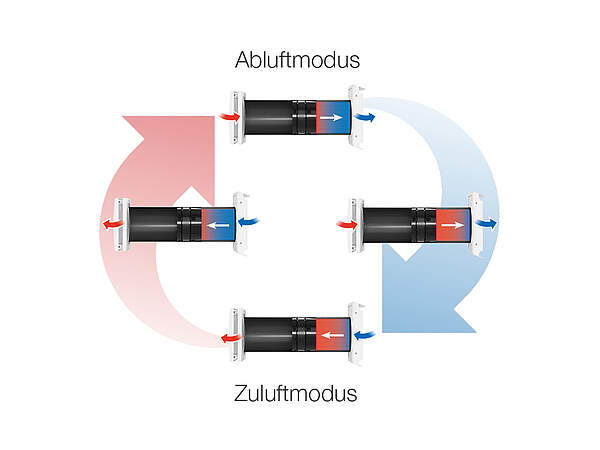
Powerful room ventilation for large rooms
iV14-MaxAir
The iV14-MaxAir provides strong and compact ventilation. The fan with increased speed brings fresh oxygen to where it is needed. Thanks to its diameter of 200 mm, it is very easy to install in the outer wall and henceforth ensures healthy indoor air.
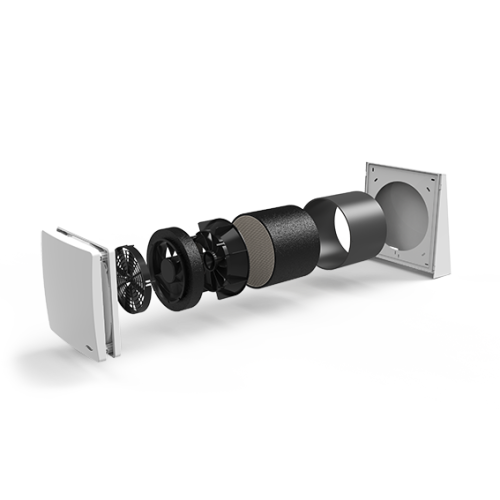
Technical specifications
| Wall thickness min. [mm] | 250 |
| Plaster min. [mm] | 120 |
| Wall opening [mm] | 225 |
| Heat recovery [%] | 88 |
| Air volume flow (heat recovery mode) [m³/h] | 10 - 45 |
| Exhaust air volume flow [m³/h] | 20 - 90 |
| Power consumption [W] | 1 - 5 |
| Specific fan power [W/(m³/h)] | 0,14 |
| Input voltage [V DC] | 6 - 16 |
| Standard sound level difference [dB] | 46 - 53 |
| Energy efficiency class | A+ / A |
| Protection class | IP 20 |
| Protection class | III |
iV-Office
Maximum performance with minimum noise – that is effective room ventilation with the iV-Office. The Xenion® EFP fan with increased speed ensures healthy air exchange – with up to 52 dB sound insulation thanks to the patented sound insulation concept.
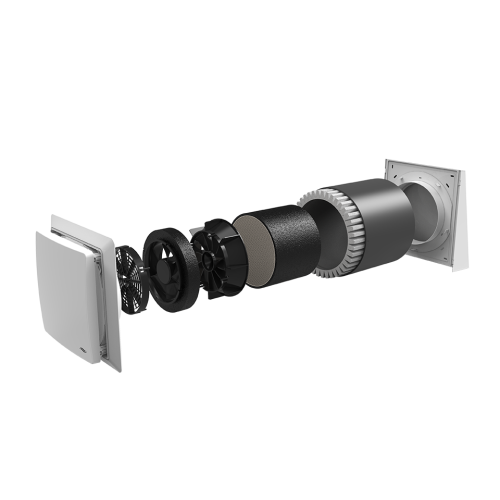
Technical specifications
| Wall thickness min. [mm] | 260 |
| Wall opening [mm] | 270 |
| Heat recovery [%] | 88 |
| Air volume flow (heat recovery mode) [m³/h] | 10 - 45 |
| Exhaust air volume flow [m³/h] | 20 - 90 |
| Power consumption [W] | 1 - 5 |
| Specific fan power [W/(m³/h)] | 0,14 |
| Input voltage [V DC] | 6 - 16 |
| Standard sound level difference [dB] | 43 - 52 |
| Energy efficiency class | A+ / A |
| Protection class | IP20 |
| Protection class | III |


